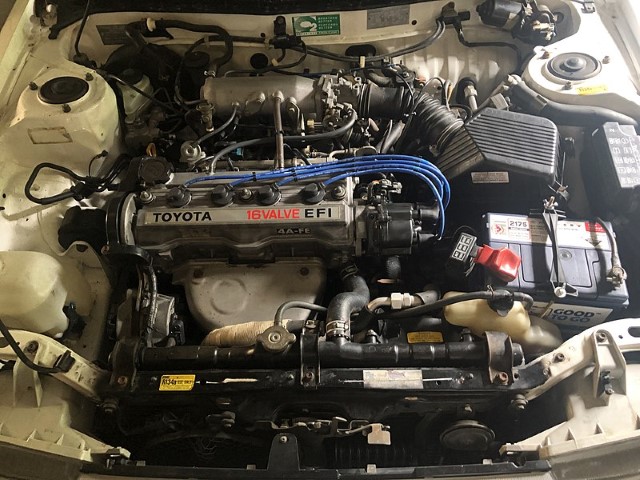4A-FE Toyota engine workshop manual download digital and repair manual
 |
Toyota 4A-FE engine factory workshop and repair manual downloadon PDF can be viewed using PDF reader like adobe , or foxit or nitro It is compressed as a zip file which you can extract with 7zip File size 17 Mb searchable Was fitted in AT220 Avensis, AT171/175 Carina , AT190 Carina , AT171 Carina II , AT190 Carina E , AT180 Celica , AE92/95 Corolla , AE101/104/109, AE111/114 Corolla, AE101 Corolla Ceres , AT175 Corona , AT190 Corona , AT210 Corona , AE95 Sprinter, AE101/104/109 Sprinter, AE111/114 Sprinter , AE95 Sprinter Carib , AE111/114 Sprinter Carib , AE101 Sprinter Marino , AE92/AE111 Corolla/Conquest (South Africa), Geo Prizm . Download digital on PDF Torque Specs Toyota 4A-FE engine factory workshop and repair online download
|
The fuel injected 4A-FE is the successor of the carbureted 4A-F. It was manufactured between 1987–2001. Toyota designed this engine with fuel economy in mind. The 4A-FE is basically the same as the 4A-F (introduced in the 6th generation of Corollas), the most apparent difference being the electronic fuel injection system as noted by the E. The engine was succeeded by the 3ZZ-FE, a 1.6-liter engine with VVT-i technology. There are three generations of this engine and can be identified by the external shape of the engine. The first generation (1987–1996) featured a plate on the head which read "16 valve EFI" and fuel injectors in the head.
The second generation had a higher profile cam design in the head, a cam cover with ribs throughout its length, and fuel injectors in the intake manifold runners. Mechanically, the late-model engines received MAP load sensing and redesigned pistons, intake ports, and intake manifold. The second generation engine was produced from 1992–1998 (1993–1996 in the US).
The third generation (1996–2001) was released exclusively for the Asian market (Japan, Philippines, Pakistan, Thailand, Indonesia, and Malaysia) only. Although it is very similar to the second generation externally, it only has a slight difference in the top section of the intake manifold and throttle body. This last generation also has a higher additional output of 4 kW (5 hp; 5 PS) compared to the second generationThe 4A-FE is different from the 4A-GE in terms of performance and power. Although both have the same displacement and are DOHC, they were optimized for different uses. The first obvious difference are the valves, the engine's intake and exhaust valves were placed 22.3° apart (compared to 50° in the G-Engines). The second is that it employed a "slave cam system", the camshafts being geared together and driven off one camshaft's sprocket (both camshafts' sprockets on the G-Engine are rotated by the timing belt). Some of the less directly visible differences were poorly shaped ports in the earlier versions, a slow burning combustion chamber with heavily shrouded valves, less aggressive camshaft profiles, ports of a small cross sectional area, a very restrictive intake manifold with long runners joined to a small displacement plenum and other changes. Even though the valve angle is closer to what is considered in some racing circles to be ideal for power (approximately 25 degrees), its other design differences and the intake which is tuned for a primary harmonic resonance at low RPM means that it has about 10% less power compared to the 4A-GE engine. This engine design improves fuel efficiency and torque, but compromises power. Power rating varied from 75–78 kW (100–105 hp; 101–106 PS) in the US market. Late-model engines are rumored to make slightly greater power but still received a 78 kW (105 hp; 106 PS) rating.

 0 Items (Empty)
0 Items (Empty)